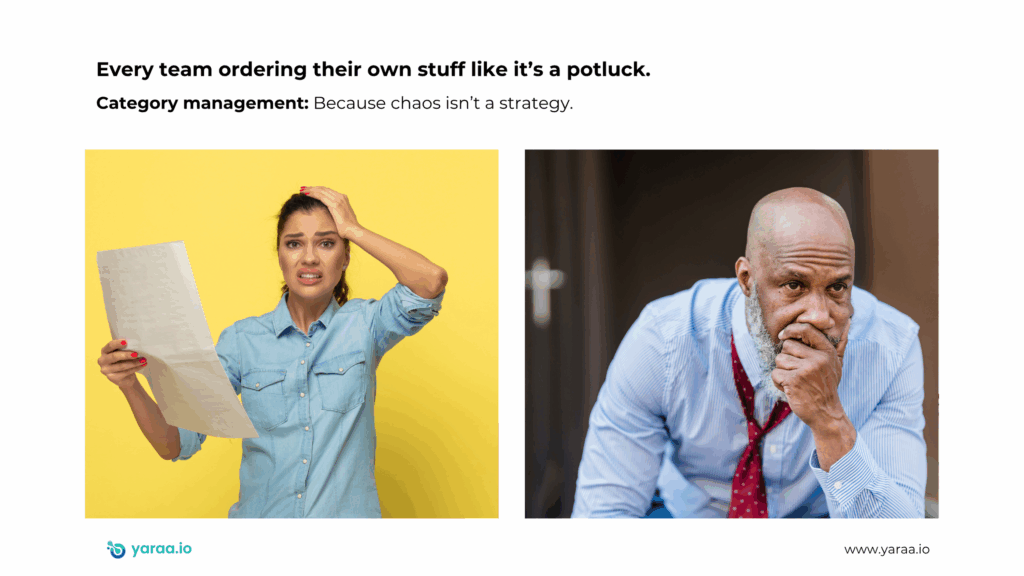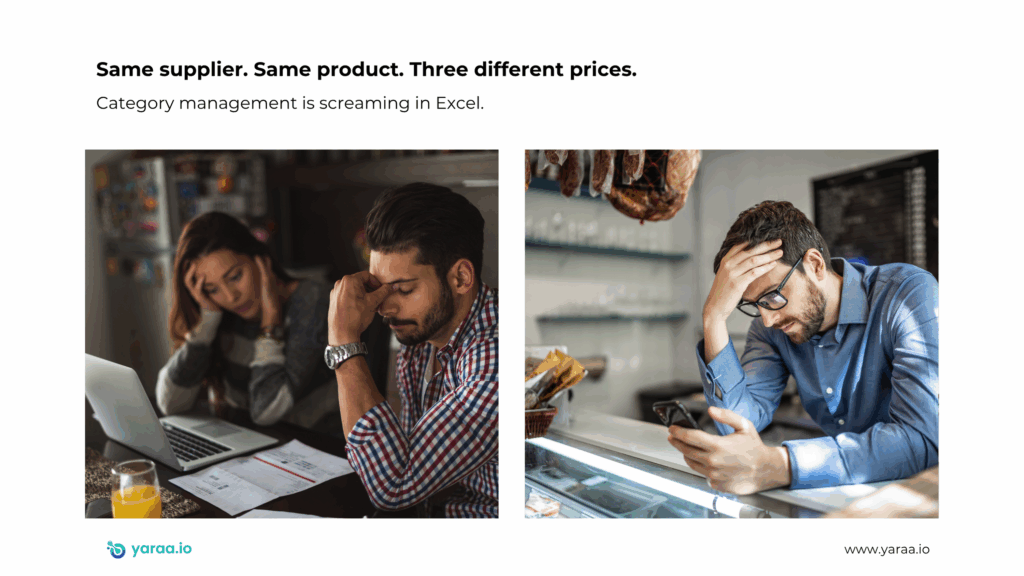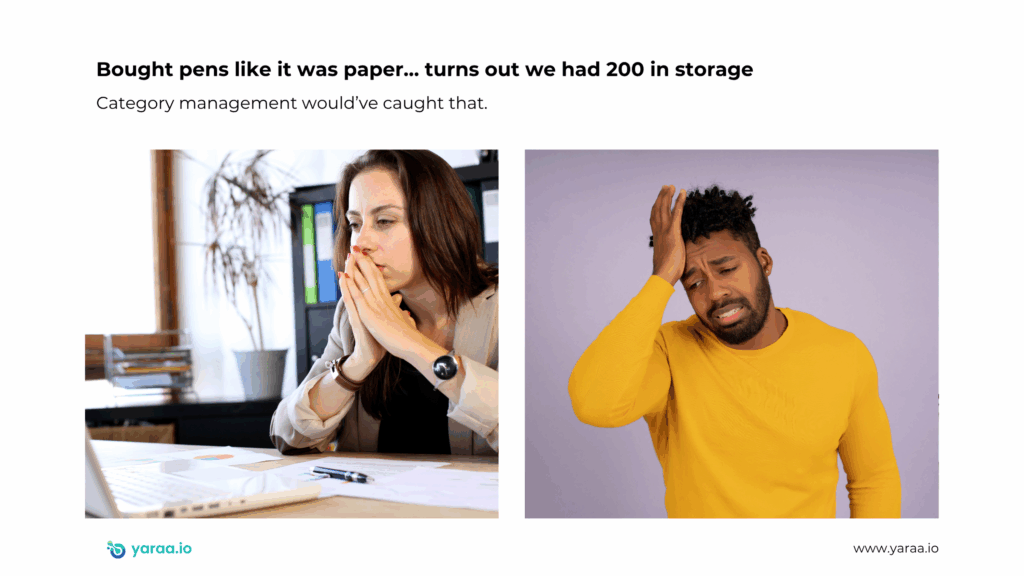EN




Managing Procurement Categories 101: A Real-World Guide
July 21, 2025 • 11:34AM • by Sam Femi
Hey there,
Sam here from Yaraa.io. I know the world of procurement can sometimes feel like a maze. One minute you’re negotiating a contract, and the next, you’re chasing down invoices, trying to figure out who ordered what and why. If you’ve ever looked at your supplier list and felt overwhelmed, you’re not alone.
Let’s talk about something that can make your procurement life way easier: Procurement Category Management. Now, before you roll your eyes and think, “Another fancy business term,” hear me out. This one is a game changer.
Let’s break it down without the jargon. Procurement Category Management is basically the process of grouping similar items your organization buys into categories and managing those categories strategically.
Imagine your procurement process is a grocery store. Instead of throwing fruits, cleaning supplies, frozen pizza, and toothpaste all into one messy shopping cart, you put apples with fruits, pizza with frozen foods, and cleaning spray with household items. That way, you know what you have, what you need, and how to get the best deals on each.
Same idea here, just applied to business.

Let’s be honest. Procurement gets messy fast. You’ve got multiple departments buying similar things from different vendors, getting wildly different prices, and using different processes. Over time, this leads to waste, confusion, and missed opportunities.
But when you manage your procurement by category, you bring order to the chaos. You gain visibility, control, and leverage. You’re not just buying things anymore; you’re building a strategy.
Alright, let’s dive into the good stuff. Here’s a roadmap you can start using today:
Start by reviewing your procurement data and grouping similar items into buckets. These are your categories. For example:
Don’t overthink it. The goal is to make sense of where your money is going.
Not all categories are created equal. Some eat up more of your budget, some carry higher risk, and others are mission-critical to your operations. Identify:
This helps you know where to focus your time and energy.
Now comes the fun part. For each category, create a mini-strategy. Ask yourself:
This turns procurement from reactive to proactive.

You don’t want to walk into negotiations blind. Keep tabs on:
This kind of market intelligence helps you make smarter, faster decisions.
One mistake procurement professionals make is going it alone. Don’t. Work closely with the people who use the goods or services you’re sourcing. They know the pain points and what actually works.
Stakeholder collaboration can help you:
Don’t just “set it and forget it.” Category strategies need to be living, breathing things. Set KPIs for each category and regularly track:
Then tweak your approach as needed. Continuous improvement is key.
Let’s be real. Even with the best intentions, things can go sideways. Here are a few traps to avoid:
Spending too much time categorizing and analyzing instead of taking action. Aim for progress, not perfection.
Procurement is a people business. Ignoring stakeholders or failing to communicate changes will sabotage your strategy.
Each category is unique. What works for IT won’t necessarily work for logistics. Customize accordingly.
Good suppliers are partners, not just vendors. Don’t treat them like interchangeable parts. Build trust and collaboration.

Let’s say your company spends a chunk of money on office supplies every year. Multiple departments buy their own stuff from different vendors — pens here, paper there, coffee somewhere else.
With category management, you:
Result? You save money, reduce waste, and get better quality — with way less stress.
The goal of category management isn’t just quick wins. It’s about building sustainable value. That means thinking beyond price to include:
You want your procurement function to evolve from a cost center to a value driver.
Procurement Category Management isn’t just for big corporations. Whether you’re managing a small team or overseeing procurement for a multi-site operation, this approach can help you:
And guess what? You don’t have to get it perfect. Just get started.
Organize your spend. Prioritize your categories. Talk to your stakeholders. Track your results. Then keep going.
It’s not about being flashy — it’s about being effective.
If you’ve made it this far, thanks for reading. I hope this helped demystify the process and gave you some real-world strategies you can apply today.
If you’re curious about how to streamline your procurement even further, feel free to book a demo — I’d love to show you how we help teams like yours make procurement smoother, smarter, and more strategic.
All the best,
Sam Femi
Yaraa.io